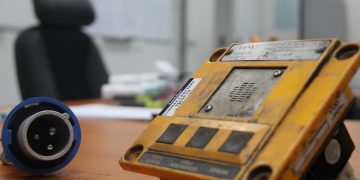Rumored Buzz on Roar Solutions
Rumored Buzz on Roar Solutions
Blog Article
Our Roar Solutions Statements
Table of ContentsSome Known Factual Statements About Roar Solutions Roar Solutions Things To Know Before You Get ThisThe Best Guide To Roar Solutions
In order to shield setups from a prospective explosion a technique of evaluating and categorizing a potentially harmful area is needed. The objective of this is to guarantee the correct choice and installment of devices to eventually stop a surge and to make sure safety and security of life.
(https://www.magcloud.com/user/roarsolutions)
No equipment needs to be mounted where the surface area temperature level of the equipment is greater than the ignition temperature level of the provided threat. Below are some typical dust dangerous and their minimum ignition temperature. Coal Dirt 380C 225C Polythene 420C (thaws) Methyl Cellulose 420C 320C Starch 460C 435C Flour 490C 340C Sugar 490C 460C Grain Dirt 510C 300C Phenolic Resin 530C > 450C Aluminium 590C > 450C PVC 700C > 450C Soot 810C 570C The probability of the risk existing in a concentration high sufficient to trigger an ignition will certainly vary from location to location.
In order to classify this risk a setup is divided right into locations of risk depending upon the amount of time the unsafe exists. These locations are referred to as Areas. For gases and vapours and dusts and fibres there are three areas. Area 0 Zone 20 A harmful atmosphere is extremely most likely to be existing and might be existing for long durations of time (> 1000 hours each year) or perhaps continually Zone 1 Zone 21 A dangerous atmosphere is feasible yet unlikely to be present for lengthy durations of time (> 10 450 C [842 F] A classification of T6 indicates the minimum ignition temperature is > 85 C [185 F] Unsafe location electrical tools perhaps made for usage in greater ambient temperature levels. This would certainly showed on the rating plate e.g. EExe II C T3 Ta + 60C( This suggests at 60C ambient T3 will certainly not be exceeded) T1 T1, T2, T3, T4, T5, T6 T2 T2, T3, T4, T5, T6 T3 T3, T4, T5, T6 T4 T4, T5, T6 T5 T5, T6 T6 T6 A T Class score of T1 implies the maximum surface temperature level created by the instrument at 40 C is 450 C. Assuming the connected T Course and Temperature score for the equipment are appropriate for the area, you can constantly make use of a tool with a much more stringent Department score than required for the location. There isn't a clear answer to this inquiry. It really does depend upon the kind of equipment and what repair work require to be carried out. Tools with particular test treatments that can not be done in the area in order to achieve/maintain 3rd party rating. Must return to the factory if it is prior to the devices's solution. Field Fixing By Authorised Worker: Challenging screening may not be needed however details treatments might require to be followed in order for the equipment to preserve its 3rd event score. Authorized personnel have to be utilized to execute the work properly Repair work have to be a like for like replacement. New part need to be considered as a direct substitute calling for no special screening of the equipment after the repair service is full. Each piece of equipment with a hazardous score should be assessed individually. These are outlined at a high degree listed below, but also for more in-depth get more information, please refer directly to the guidelines.
7 Simple Techniques For Roar Solutions
The devices register is a thorough database of devices records that includes a minimum collection of fields to identify each product's area, technological criteria, Ex category, age, and environmental information. The ratio of Thorough to Shut evaluations will be established by the Devices Threat, which is assessed based on ignition risk (the probability of a resource of ignition versus the likelihood of a flammable ambience )and the unsafe area classification
( Zone 0, 1, or 2). Carrying out a robust Risk-Based Assessment( RBI )method is critical for making sure conformity and security in handling Electrical Devices in Hazardous Areas( EEHA).
Some Ideas on Roar Solutions You Should Know

In terms of explosive threat, a hazardous location is a setting in which an explosive environment exists (or may be anticipated to be existing) in amounts that require unique precautions for the building, installment and use tools. hazardous area electrical course. In this article we check out the challenges dealt with in the workplace, the danger control measures, and the required expertises to function securely
These compounds can, in particular conditions, develop explosive environments and these can have major and heartbreaking consequences. Most of us are acquainted with the fire triangle eliminate any kind of one of the three components and the fire can not take place, but what does this mean in the context of harmful locations?
In the majority of circumstances, we can do little regarding the levels of oxygen airborne, but we can have significant influence on sources of ignition, as an example electrical devices. Dangerous areas are recorded on the dangerous location classification drawing and are recognized on-site by the triangular "EX-SPOUSE" indication. Right here, among other key information, zones are split into three kinds depending on the threat, the possibility and period that an eruptive atmosphere will exist; Area 0 or 20 is considered one of the most hazardous and Area 2 or 22 is deemed the least.
Report this page